Rifles, palm trees and dictators. Mausera Central America and the Caribbean Islands (Rifles by countries and continents - 12)
And both authors noted one important feature of this region: no matter what country you take it, any dictator ruled there and all these local kings required what? Rifles!
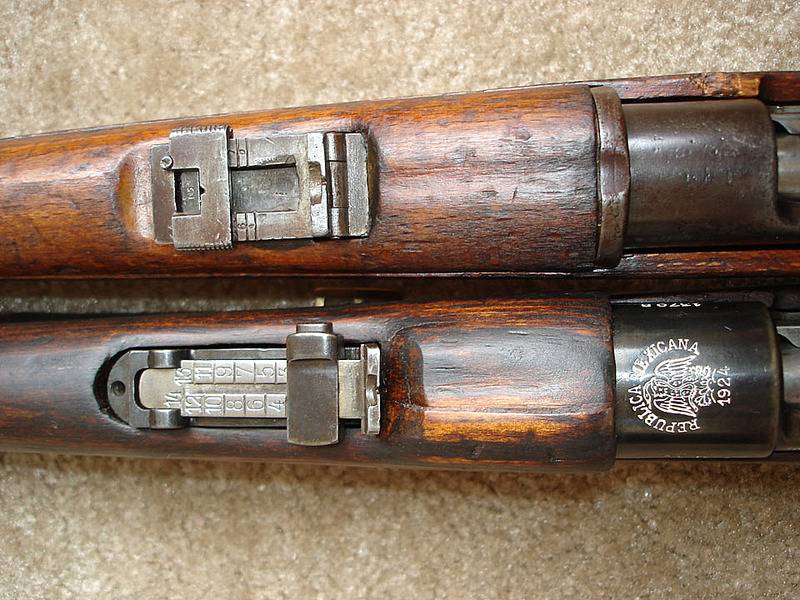
"Mexican Mauser" (below) M1924
However, the countries of this region have not developed the domestic arms industry. Instead, they preferred to import weapon either by purchasing or as foreign military assistance. As in South America, the choice of rifles was often determined by the preferences of the colonial power with which they were historically associated. That is, Mexico and Cuba to Spain, the former British colonies, of course, to England. But at the same time there were some, let's say, “features of supply”. The British colonies used SMLE rifles, but the ex-Spanish colonies were very often armed with mosers in imitation of the example of Spain. And despite the fact that the “great northern neighbor” - the United States was very close. However, weapons were also exported from there in large quantities, but mostly they were hard drives, not sliding-rifle rifles. At the end of the 19th century, the American rifle with a Remington crane of the .43 caliber was very popular here. Such rifles were in service with the army of Nicaragua, Costa Rica and many other countries. However, quite soon, namely, when switching to cartridges with smokeless powder of a reduced caliber, the Mauser rifle became person # XXUMX, although of a different caliber than that adopted in Germany itself. And the most interesting thing is that many countries ordered rifles, especially after the Second World War, not just anywhere, but in Czechoslovakia. Whose military industry, it can be said, literally worked on the army of these "banana republics".
Mauser M93 rifle, Spain, cartridge 8x58r (Army Museum in Stockholm)
The most popular export weapon was a Vz rifle. 24 (czech. Puška vz. 24), which was a modernized version of the VZ-23 and produced in 1924-1944, as well as carbines on their base. The rifle was supplied to Bolivia (101 thousand units), Brazil (15 thousand units), Guatemala (4 thousand units), Spain (40 thousand units), Iran (30 thousand units), China (195 thousand units), Colombia (10 thousand units), Lithuania (15 thousand units), Peru (5 thousand units), Romania (750 thousand units), Slovakia (762 thousand units) Turkey (40 thousand units), Uruguay (4 thousand units), Ecuador (30 thousand units), Yugoslavia (10 thousand units) and even Japan (40 thousand units). The carbines produced for the Wehrmacht were designated as “Gewehr -24 (t)”. In total, 3,4 million units were produced. TTX carbine were as follows: caliber - 7,92 mm; length - 1100 mm; barrel length - 589 mm; weight without cartridges - 4,2 kg; magazine capacity - 5 cartridges 7,92х57 mm; initial bullet speed - 860 m / s; sighting range - 2 km.
Swedish carbine M1894, chambered for cartridge 6,5x55 mm. (Army Museum in Stockholm)
As you can see, for a comparatively small country, which Czechoslovakia was in those years, this is simply amazing output. This rifle was made from 1924 of the year to the end of 1944 of the year at the weapons factory in the town of Povazska Bistrita and was constructively a modification of the German magazine rifle Mauser 98. At the same time, the rifle had a slightly different design, and it was shorter and more comfortable than the Mauser. The model VZ-98 / 22 or “Czech Mauser” is also known. The line for its release and parts for the release of the rifle were transferred to Czechoslovakia after the First World War. The rifle was manufactured by Brno Arsenal in 1923. In total, 50 thousands of units were produced, of which 10 thousands were sold to Turkey.
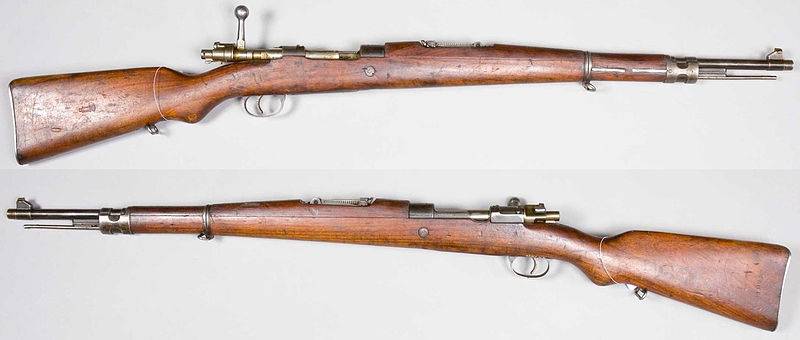
M1924 - "Yugoslav Mauser". (Army Museum in Stockholm)
As for the VZ 23 carbine, it was also created on the basis of the German Mauser 98AZ carbine and was produced from the end of 1922 in two versions - VZ-23 and VZ-23. Total 130 thousand units were released. TTX carbine: caliber - 7,92 mm; length - 1054 mm; barrel length - 546 mm; weight without cartridges - 4 kg; magazine capacity - 5 cartridges 7,92х57 mm; initial bullet speed - 860 m / s. sighting range - 2 km.
Portuguese Mauser 1937
The design of the VZ-24 carbine was based on the design of the Mauser Musketon M12, which before World War I was produced for Brazil and the Mauser 98 rifle. It was produced in 1934-1942. Known lightweight version under the name VZ-33. In Germany, it was also produced as “Gewehr 33 / 40 (t)”. Some rifles in Germany were equipped with ZF-41 optical sights. Total 156,8 thousand units were produced. TTX carbine: caliber - 7,92 mm; length - 995-1000 mm; barrel length - 490 mm; weight - 3,4 kg; magazine capacity - 5 cartridges 7,92х57 mm; initial bullet speed - 720 m / s; sighting range - 1000 m.
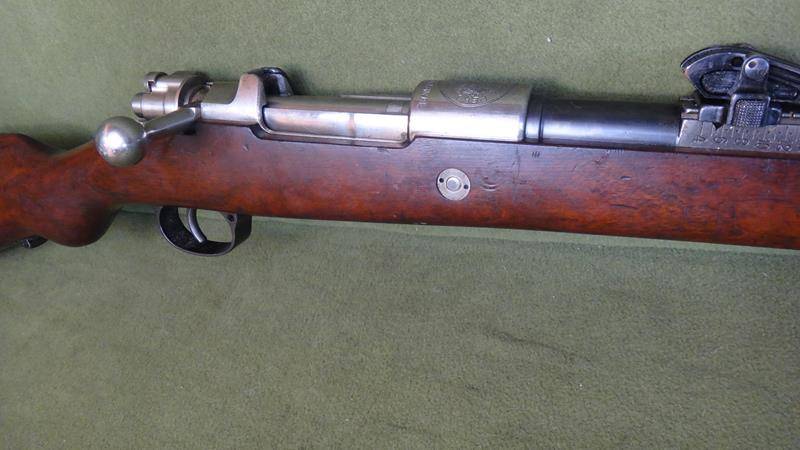
Mauser 1909, Year M98 for Peru.
After World War II, Czechoslovakia continued to produce rifles for the "banana republics." In particular, the Dominican Mauser of the M1953 of the year, which was in service with the army of the Dominican Republic, is known. This model was made from surplus Brazilian rifles. And it was distinguished by the blackening of all parts, including the barrel and bolt, which was done to protect against moist and salty air. There are two versions of where these rifles were modified. This was done either in Brazil or at the Dominican enterprises, which were managed by Hungarian specialists who fled here under the wing of the dictator General Raphael Trujillo, who pursued an active "open door" policy and invited everyone who did not like the situation in his own countries to the country. only they were not blacks! True, his cruel rule ended with the fact that in 1961, he was killed, although in the end he was buried in the Pere Lachaise cemetery. It is characteristic that these rifles have a rectangular recess under the bolt handle on the bed, similar to the German rifles Gewer 98.
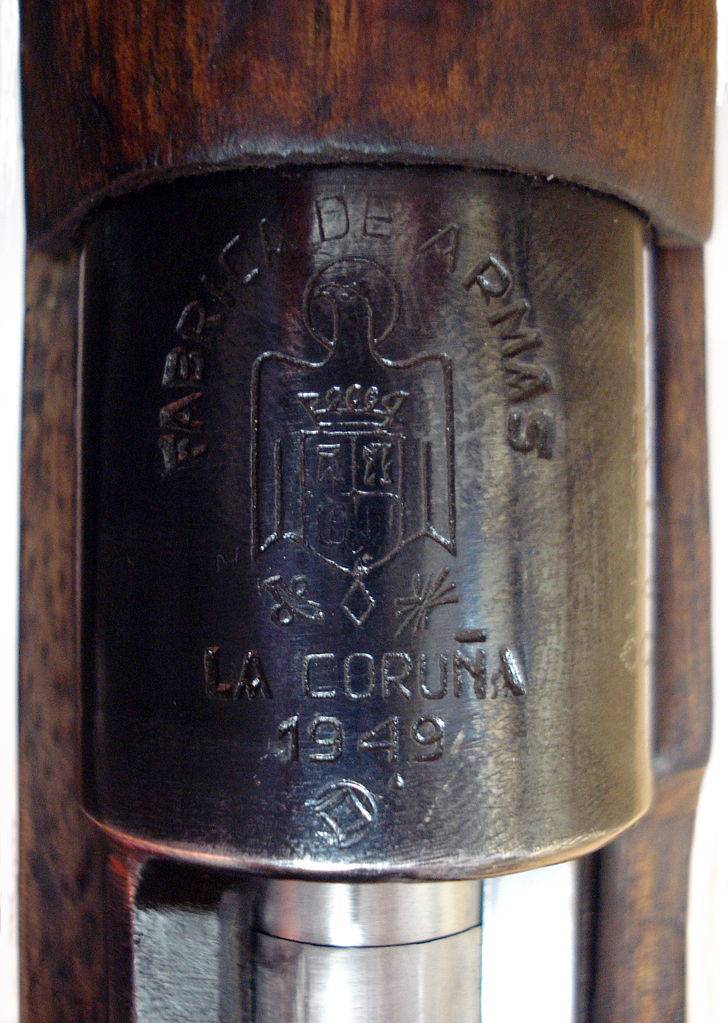
Spanish Mauser 1949 year of release. Factory in La Coruna.
The Guatemalan Mauser VZ.24 was produced in the amount of 4 thousand copies in the city of Brno. This is a typical VZ.24, but its caliber is 7-mm chambered for 7x57 mm. In this model, the handle reloading straight. The bolt is chrome-plated, but the receiver and barrel are black. The Nicaraguan VZ.24 was also produced in Brno, but in the total number of 1000 copies.
The Salvadoran Mauser VZ.12 / 32 (7x57 cartridge mm) was a carbine, a copy of the German one, and was shipped to this country, judging by the marking, starting from 1937, but the M1910 Mouzers were received in 1910 / 11. from Germany, where they were made at the plant in Oberdorf in the number of 5200 copies chambered for 7 XX57 mm. This Mauser again had a straight grip. Apparently this was the wish of the customer.
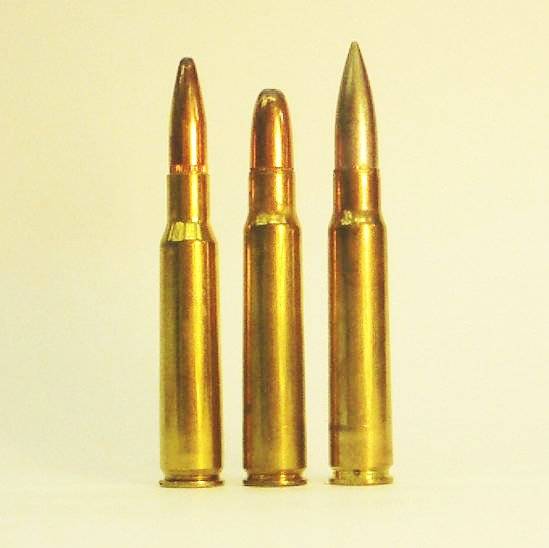
7-mm cartridge "Mauser", 7,92-mm "Mauser" with a blunt bullet, 7,92-mm "Mauser" with a pointed bullet.
Here you need to say a few words about the cartridge 7 × 57 mm, under which many rifles produced by the armies of the Caribbean. It was a cartridge of the first generation of rifle cartridges on smokeless powder, which used the sleeve 7,92 × 57 mm. It is believed that the creator of this cartridge is the famous firm Mauser, who considered that the optimal caliber for a rifle could be 7 mm (actually 7,2 mm) with a bullet weight around 9. It is known that it was developed in 1892 year, but in Germany itself in service has not entered. Already in 1893, this cartridge was adopted by the Spanish army along with new German rifles for these cartridges. In the next few years, this new ammunition, like the weapons developed for it, in particular the Mauser rifles of the 1895 and 1897 models, was also used in several Latin American countries at once. In 1900, it was for this cartridge that the final rifle of General Mondragon, the first self-loading rifle in the world, was developed.
The reason for the rapid spread of this cartridge is obvious - it is its good characteristics: flatness of the trajectory, good accuracy when shooting and not too much impact. For the 90-ies of the XIX century, all these indicators were truly outstanding. An important role was played in this case by the fact that the designers used in it a light pointed bullet instead of the traditional for that time heavy and blunt-pointed bullets, which had a steep trajectory and a relatively low speed.
The 7 × 57 mm cartridge was used in several wars and conflicts at the turn of the century. For example, the Spaniards fired these cartridges during the Spanish-American War of the 1898, and during the war of Spain against reef tribes in Morocco in the 1920-s. By the way, in the USA they paid attention to them after the battles with the Spanish troops in Cuba, where losses among American soldiers from rifle fire turned out to be unexpectedly very high. The Boers, armed with rifles just under the chambered 7 × 57 mm, proved the same to the British during the Second Boer War, where they also inflicted heavy losses on the British. At the same time, the 7 × 57 mm cartridge, both in accuracy and in firing range, proved to be much better than the standard British .303 cartridge, which used a cord that did not give such a firing range. The Serbian army used this cartridge in its Mauser-Milovanovic rifle during the First World War.
Продолжение следует ...
- V. Shpakovsky
- Rifles by countries and continents. Part of 11. Like a ross rifle, I almost became Huot's machine gun.
The same "Spencer." Rifles by country and continent - 10
Rifles for South America (Rifles by countries and continents - 9)
Rifles - the heiress of revolver guns (Rifles by countries and continents - 8)
Great Gun Drama USA (Rifles by Countries and Continents - 7)
Great Gun Drama USA (Rifles by Countries and Continents - 6)
Great Gun Drama USA (Rifles by Countries and Continents - 5)
Great Gun Drama USA (Rifles by Countries and Continents - 4)
Great Gun Drama USA (Rifles by Countries and Continents - 3)
Great Gun Drama USA (Rifles by Countries and Continents - 2)
Rifle for Simo Hyahuya (continuation of the theme “Rifles by countries and continents” - 1)
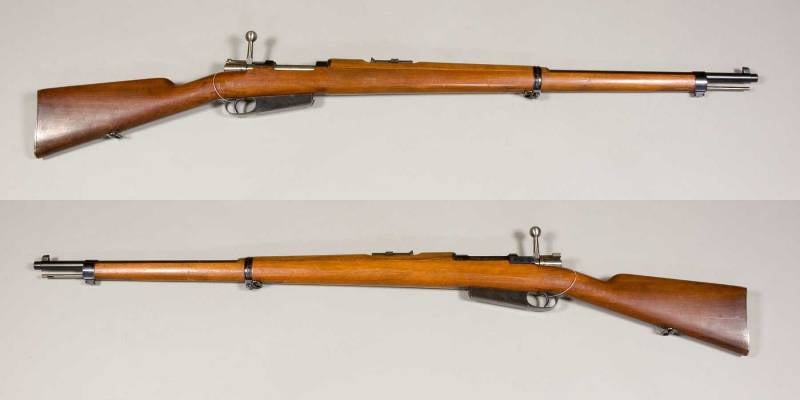
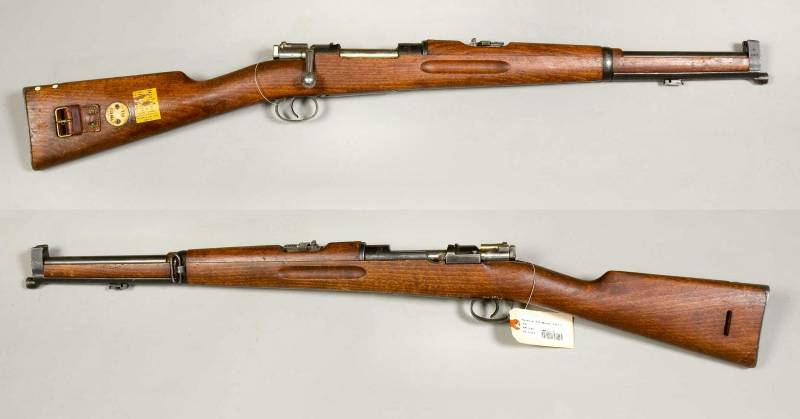
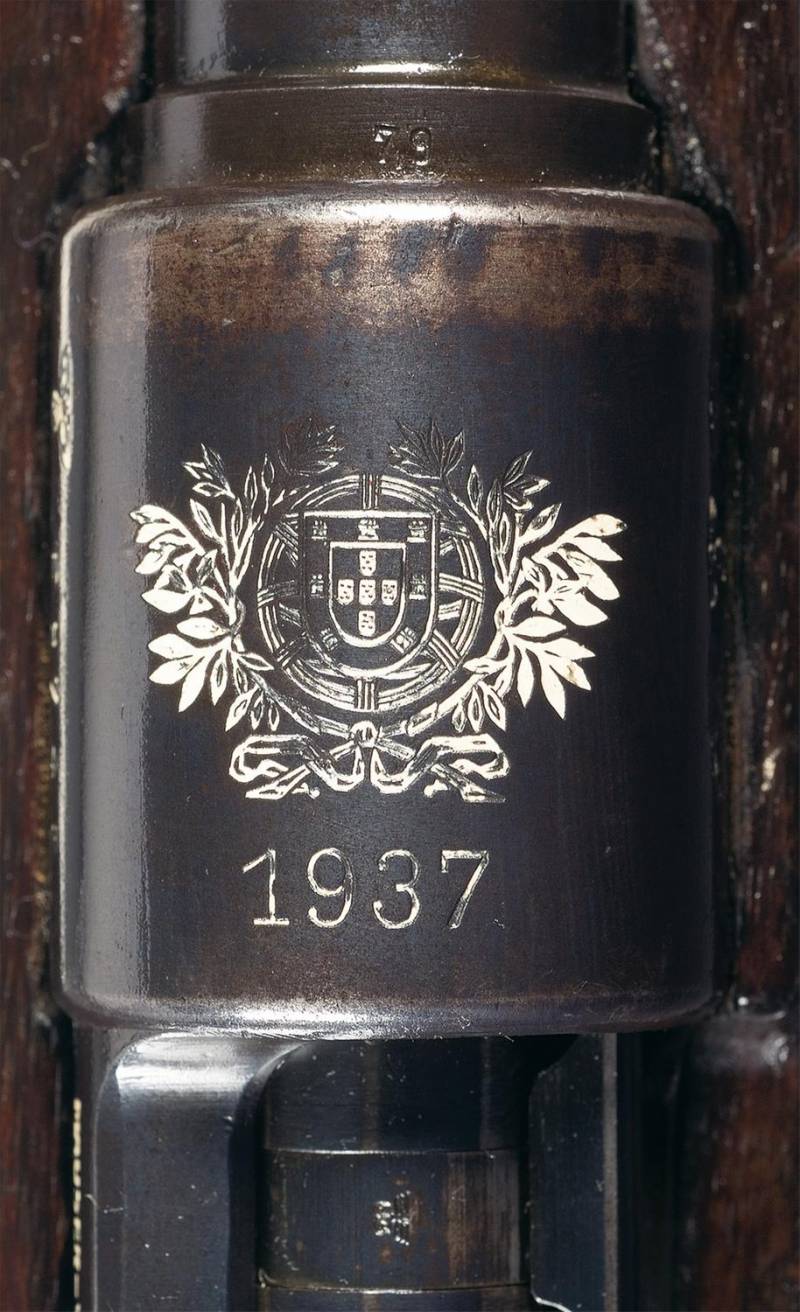
Information